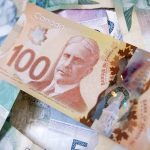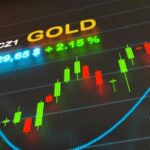Oct 19, 2022
VOT Research Desk
Market Insights, Considerations & Analytics
Today, the prospect of aggressive U.S. Federal Reserve interest rate hikes supported the dollar’s rise from a two-week low against a basket of major peers while keeping it close to a 32-year high against the yen.
Following the Bank of England’s decision not to sell any longer-duration gilts this year and its denial of a Financial Times report that it would delay quantitative tightening, sterling consolidated in the middle of its trading range this week. The euro fell back from its two-week high.
The dollar reached its highest overnight level since August 1990, 149.395 yen, before closing at 149.305 yen during the Asian session.
As the currency pair moves closer to the crucial psychological barrier of 150, traders are on high alert for the Ministry of Finance and Bank of Japan to enter the market once more. The first yen-buying intervention since 1998 was prompted by a cross of 145 a month ago
.
Local media reported that Japanese Finance Minister Shunichi Suzuki said on Wednesday that he was checking currency rates more frequently and “meticulously.
After falling overnight to its lowest level since Oct. 6 at 111.76, the dollar index, which measures the currency against six peers including the yen, sterling, and euro, gained 0.2 percent to 112.19.At 114.78 at the end of September, it reached a high not seen in many decades.
This week, amid the bearish rally in global stocks following some upbeat earnings, the greenback, which currently reigns as the preferred safe-haven currency, has sagged.
However, despite the possibility of triggering a recession, market pricing continues to provide underlying support for the Fed’s two additional 75 basis point hikes this year as it focuses on soaring inflation
The outlook for markets worldwide is also being clouded by Britain’s fiscal uncertainty.
We don’t think this is much more than a brief break in the bull run of the dollar. Expectations are for a retest of the peak in November from last month.
Since the MOF has already crossed the Rubicon and is likely only intended to control the scope of speculative positioning rather than causing a sustained reversal, there is still an intervention risk when it comes to the yen. However, it is difficult to understand why the pair wouldn’t move into the 150–155 range. However, given the BOJ’s position as the only developed-market central bank still pursuing a negative interest rate policy, a number as round as 150 will probably take some work to break short-term.
In the meantime, sterling was little changed at $1.1318, still reeling from its previous session’s 0.34 percent decline. On Tuesday, a report in the Financial Times that the Bank of England would delay quantitative tightening initially led to a rise in the currency, but the Bank of England later called the report inaccurate.
The Bank of England stated that it would begin selling some of its enormous stock of British government bonds on November 1, but that it would not sell any longer-duration gilts this year, which have been at the center of market volatility since the government’s “mini budget” disaster.
Australian Commonwealth Bank (OTC: The British pound will continue to be under pressure, according to CMWAY.
Prediction of the Bank of England would raise interest rates by a full percentage point next month. “Elevated energy prices and rapid monetary policy tightening by the Bank of England will soon see the UK economy fall back into recession,
Relative economic performance will remain a weight on GBP,” which will cause the currency to “underperform despite the recent easing in fiscal uncertainty.
The euro fell 0.24 percent to $0.9836, falling from its Oct. 6 high of $0.98755 on Tuesday.
A Reuters poll of economists says that the European Central Bank will raise interest rates by 75 basis points on Thursday of next week.
After the shocking consumer price data on Tuesday, the New Zealand dollar continued to rise, raising expectations for the Reserve Bank of New Zealand’s continued aggressive tightening. At $0.56905, the currency was just 0.08 percent higher than its previous two-week high of $0.5719.
At $0.6311, the Australian dollar was little changed from Tuesday.








